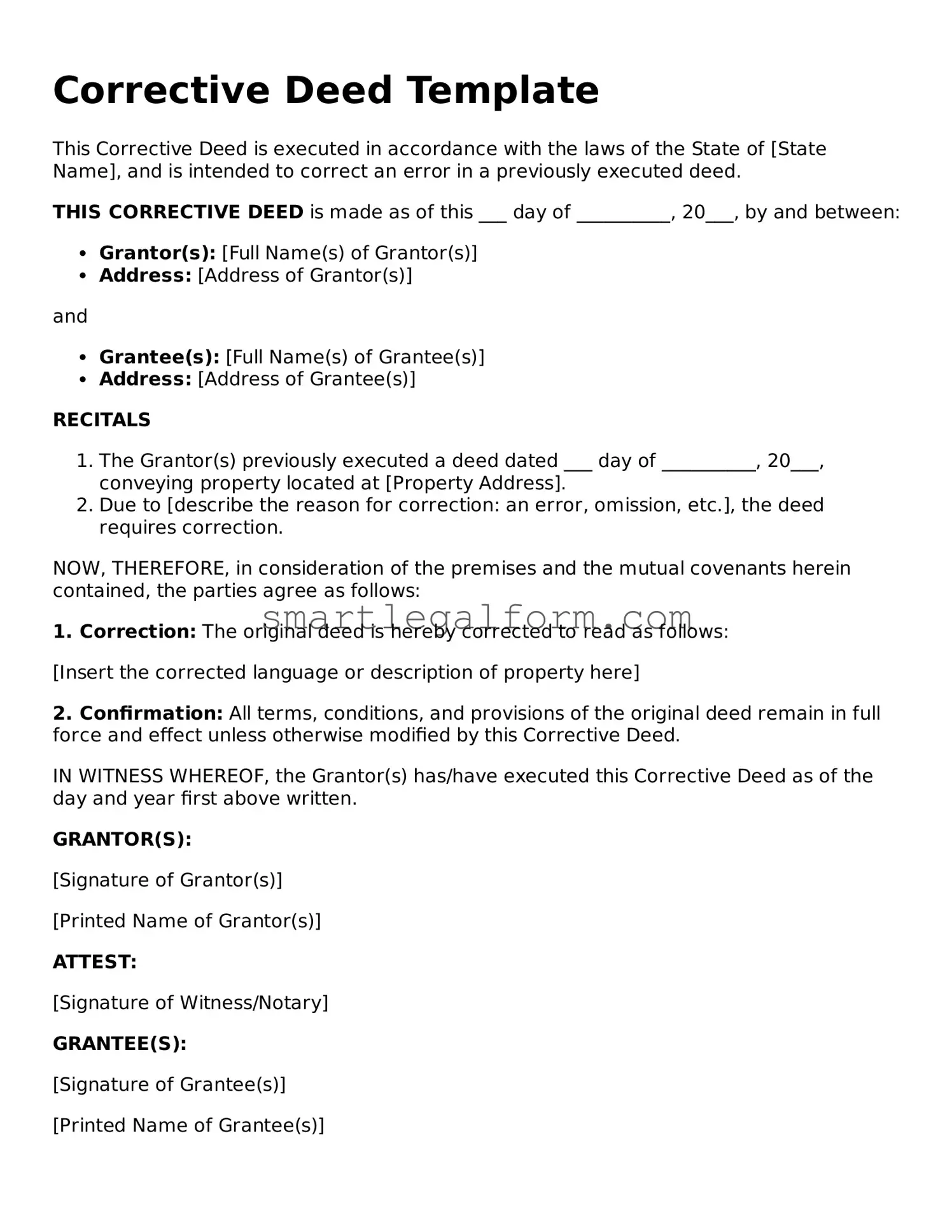Corrective Deed Template
This Corrective Deed is executed in accordance with the laws of the State of [State Name], and is intended to correct an error in a previously executed deed.
THIS CORRECTIVE DEED is made as of this ___ day of __________, 20___, by and between:
- Grantor(s): [Full Name(s) of Grantor(s)]
- Address: [Address of Grantor(s)]
and
- Grantee(s): [Full Name(s) of Grantee(s)]
- Address: [Address of Grantee(s)]
RECITALS
- The Grantor(s) previously executed a deed dated ___ day of __________, 20___, conveying property located at [Property Address].
- Due to [describe the reason for correction: an error, omission, etc.], the deed requires correction.
NOW, THEREFORE, in consideration of the premises and the mutual covenants herein contained, the parties agree as follows:
1. Correction: The original deed is hereby corrected to read as follows:
[Insert the corrected language or description of property here]
2. Confirmation: All terms, conditions, and provisions of the original deed remain in full force and effect unless otherwise modified by this Corrective Deed.
IN WITNESS WHEREOF, the Grantor(s) has/have executed this Corrective Deed as of the day and year first above written.
GRANTOR(S):
[Signature of Grantor(s)]
[Printed Name of Grantor(s)]
ATTEST:
[Signature of Witness/Notary]
GRANTEE(S):
[Signature of Grantee(s)]
[Printed Name of Grantee(s)]
